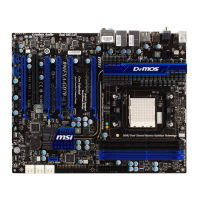VIA VT6420 Serial ATA RAID Introduction
C-3
RAID 0 (Striping)
RAID 0 reads and writes sectors of data interleaved between multiple
drives. If any disk member fails, it affects the entire array. The disk array data
capacity is equal to the number of drive members times the capacity of the
smallest member. The striping block size can be set from 4KB to 64KB. RAID
0 does not support fault tolerance.
RAID 1 (Mirroring)
RAID 1 writes duplicate data onto a pair of drives and reads both sets of
data in parallel. If one of the mirrored drives suffers a mechanical failure or
does not respond, the remaining drive will continue to function. Due to
redundancy, the drive capacity of the array is the capacity of the smallest
drive. Under a RAID 1 setup, an extra drive called the .spare drive. can be
attached. Such a drive will be activated to replace a failed drive that is part of
a mirrored array. Due to the fault tolerance, if any RAID 1 drive fails, data
access will not be affected as long as there are other working drives in the
array.
JBOD (Spanning)
A spanning disk array is equal to the sum of the all drives when the
drives used are having different capacities. Spanning stores data onto a drive
until it is full, then proceeds to store files onto the next drive in the array.
When any disk member fails, the failure affects the entire array. JBOD is not
really a RAID and does not support fault tolerance.

